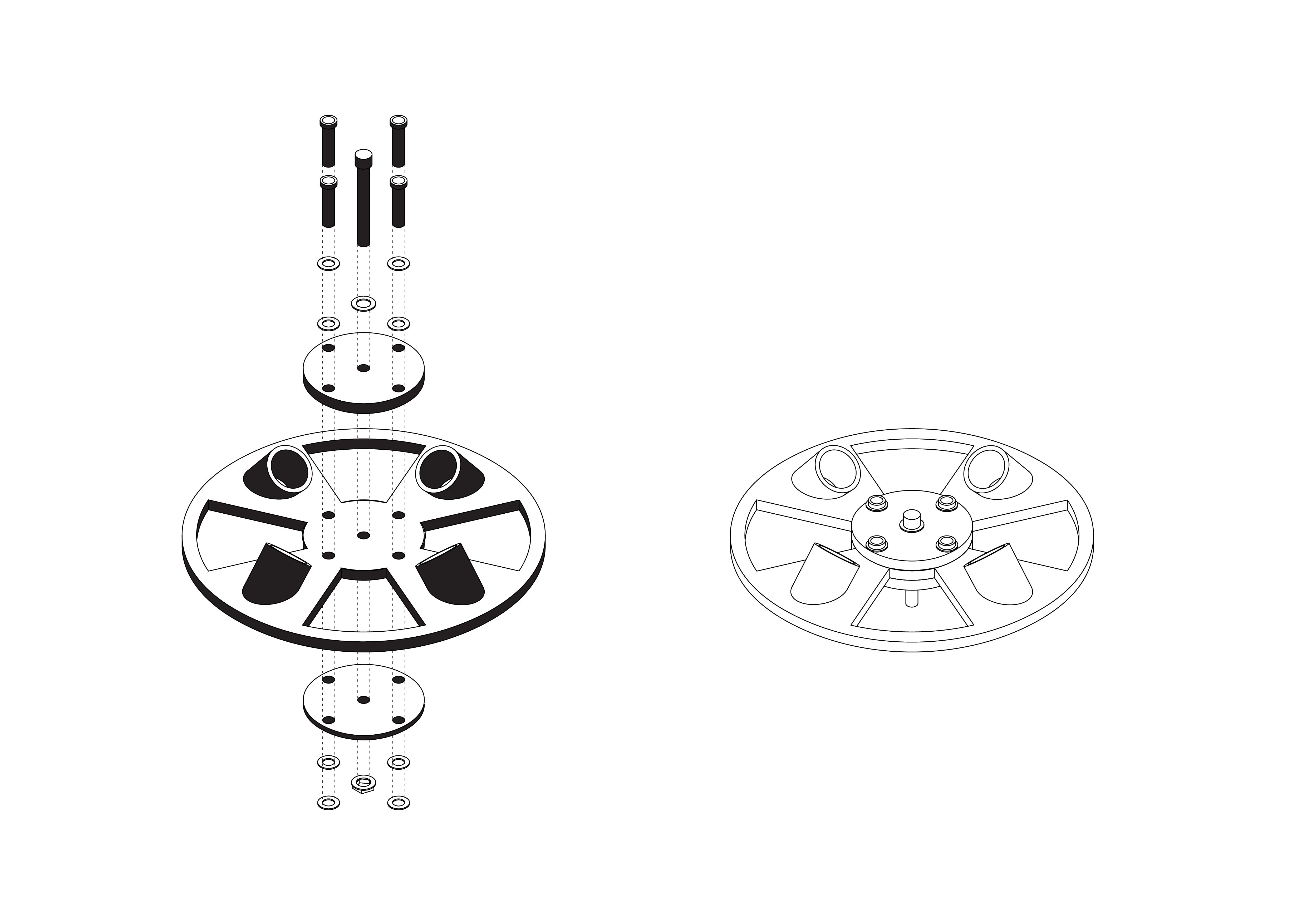| IV. DIY CENTRIFUGE |¶
A centrifuge is a laboratory device that is used for the separation of fluids, gas or liquid, based on density. Separation is achieved by spinning a vessel containing material at high speed; the centrifugal force pushes heavier materials to the outside of the vessel. This apparatus is found in most laboratories from academic to clinical to research and used to purify cells, subcellular organelles, viruses, proteins, and nucleic acids. There are multiple types of centrifuge, which can be classified by intended use or by rotor design. From the large floor variety to the micro-centrifuge, there are many varieties available for the researcher.
Tools¶
- Drill, 3D printer, screws, Eva textile (laser cutter - optional), 2 - 4x lab tubes 25ml (centrifuge)
Components¶
| n. | Name | Price | Amount | Source |
|---|---|---|---|---|
| 01 | Drill | x € | 1 | Fab Lab BCN |
| 02 | Holder (3D printed) | x € | 1 | Fablab BCN |
| 03 | Circle (3D printed) | x € | 1 | Fablab BCN |
| 04 | Screws (4mm - 20mm) | x € | 1 p | Fablab BCN |
| 05 | Screws (3mm - 5mm) | x € | 4 p | Fablab BCN |
| 06 | Eva textile | x € | 1 (10x10 mm) | Fablab BCN |
| 07 | Plastic tubes (25ml) | x € | 2 / 4 | Pidiscat |
| TOTAL | - | x € | - | - |
Axonometry view¶



3D-printed holder¶
| Filament | 3D printer | Layer | Temperature | Printing speed | Printing time | Weight | Infill |
|---|---|---|---|---|---|---|---|
| PLA | Ender 3 | 0.3 mm | 210°C | 30 mm/sec | 4 h 03 min | x g | 10 % |
Process¶
SOURCE¶
- FILE
- Drill-powered Centrifuge
- Electric drill driver as centrifuge
- Electric drill as centrifuge with 3D-printed custom holders for non-conventional containers
- Simple Centrifuge
- Centrifuge by BioHack Academy, Advanced
Last update: 2022-05-12